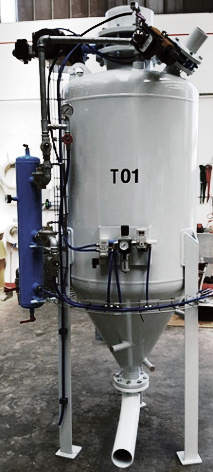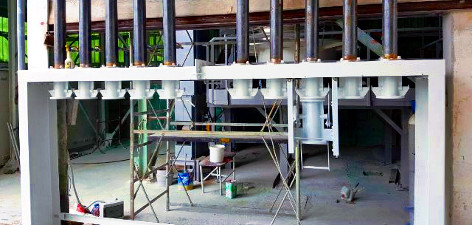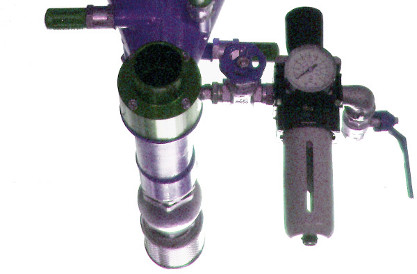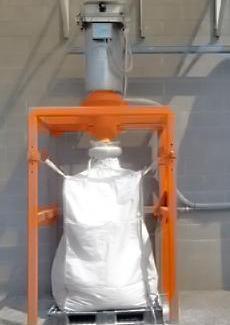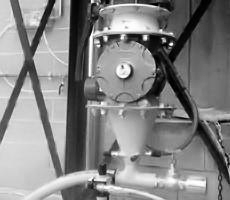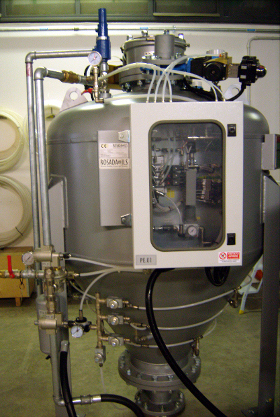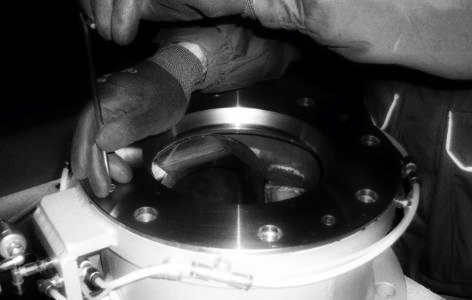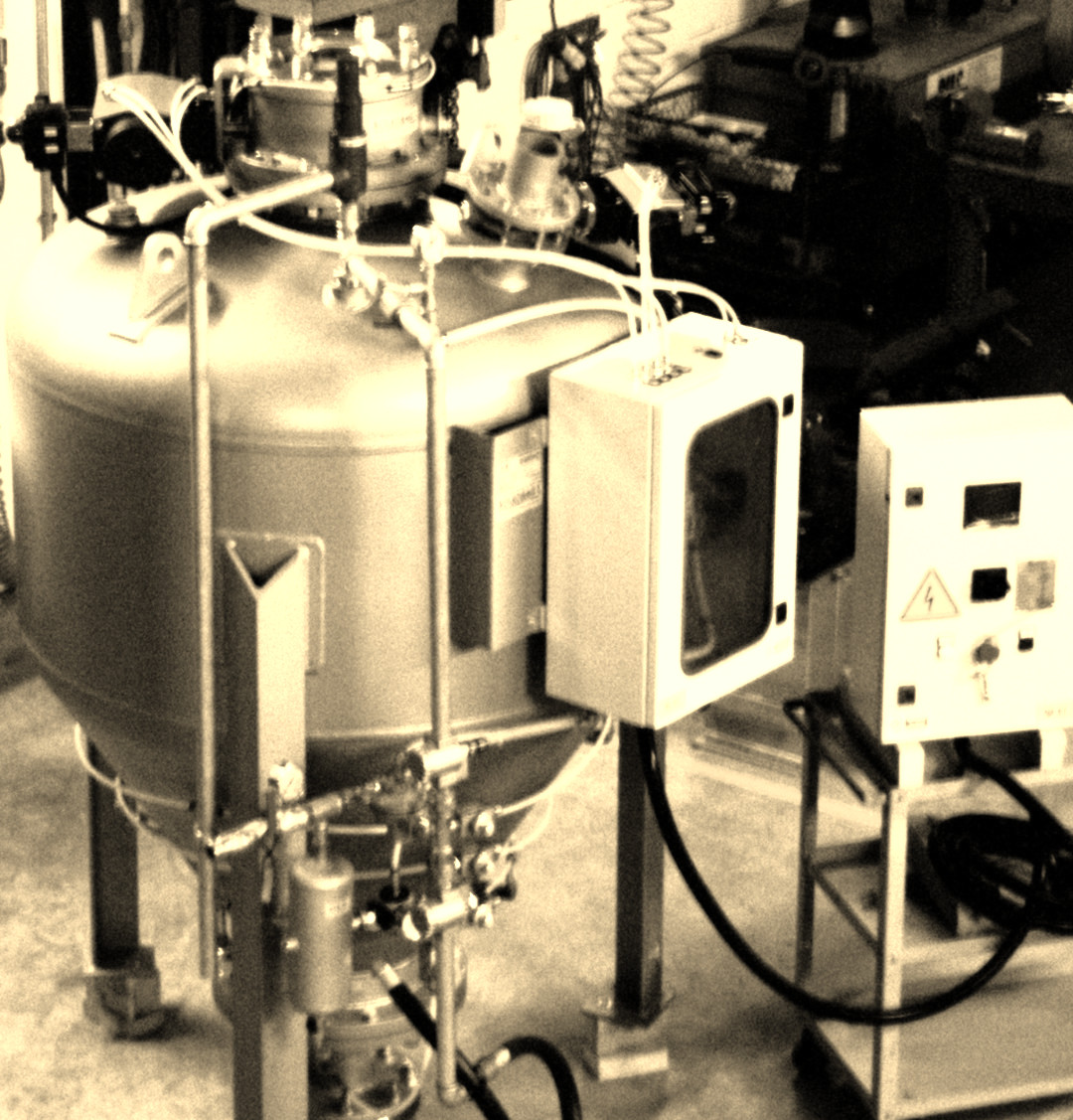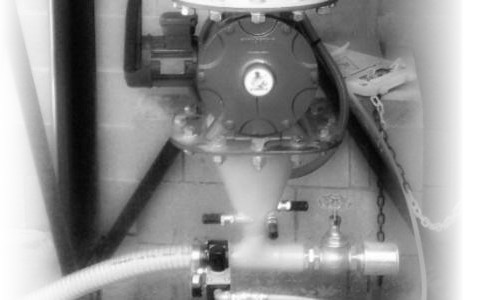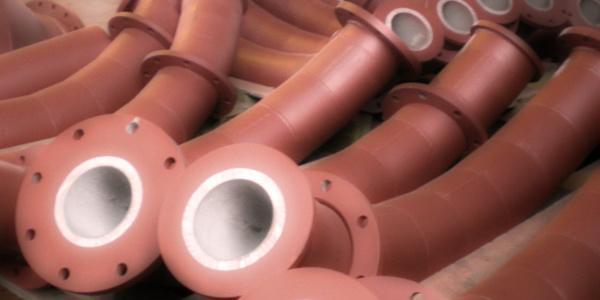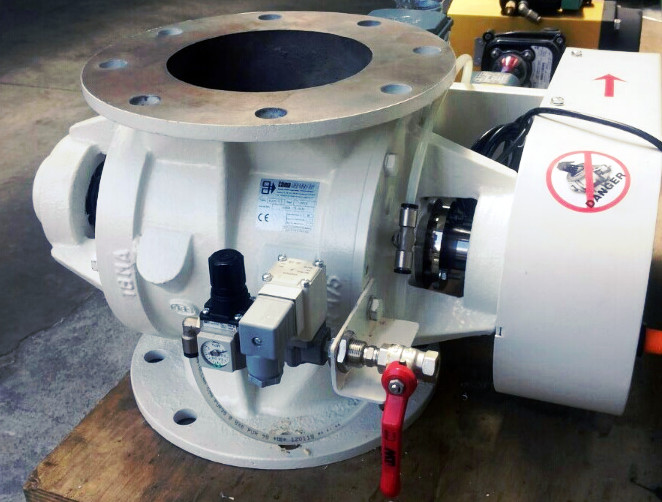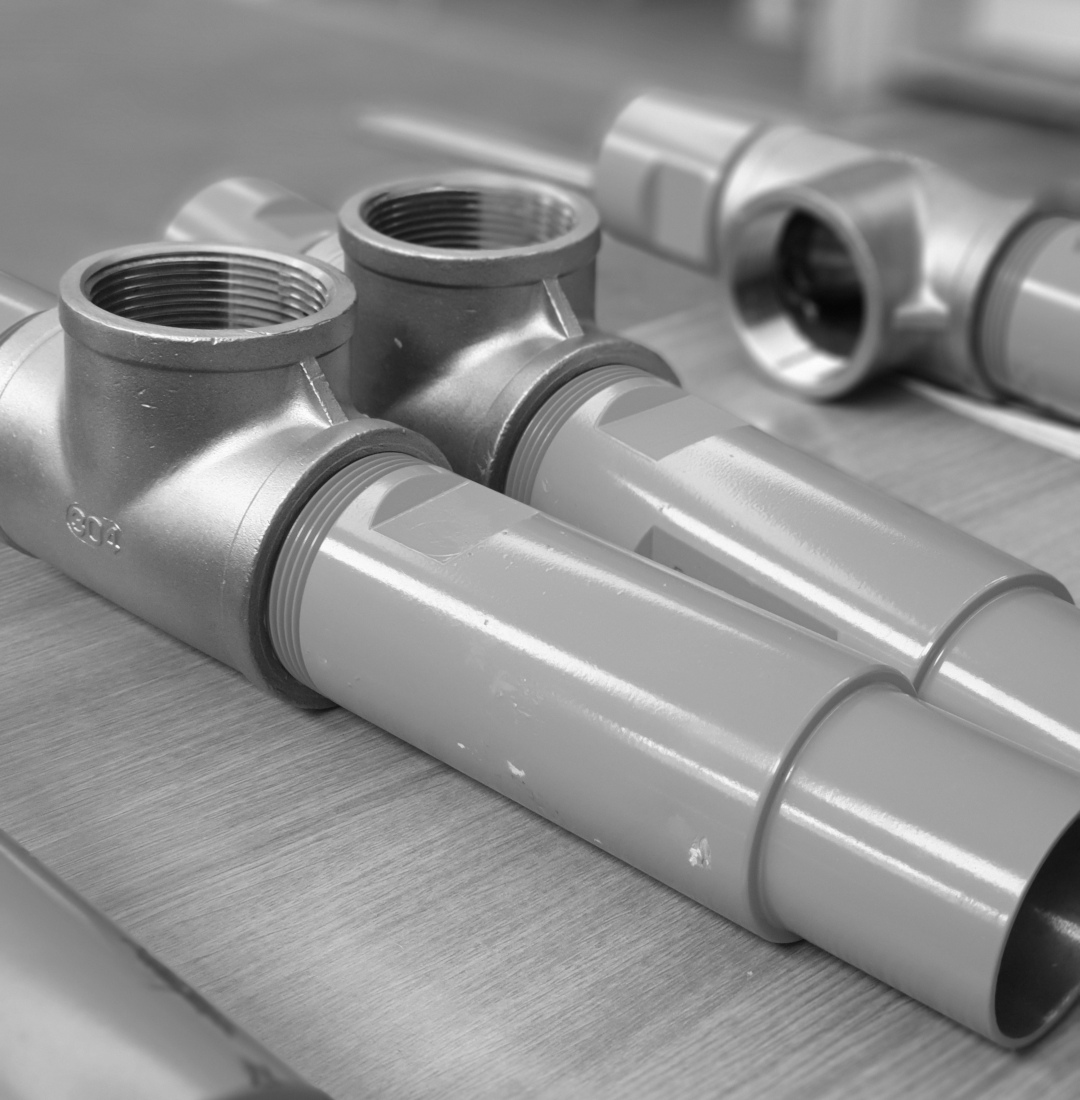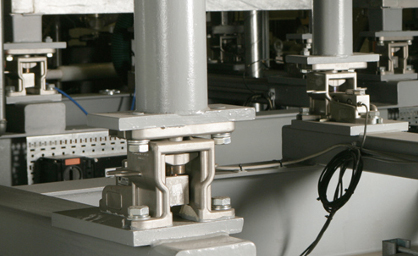It is a j-pack system RV model of air dilute phase pneumatic conveying.
The powders are used for the treatment of the fumes in the duct. They are stored in a silo and discharged from it in a hopper with gravimetric micro dozer.
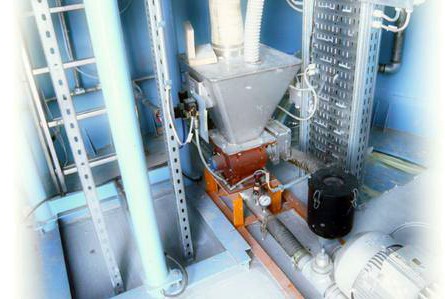
The injection takes place by means of j-pack with a rotary valve in a pipe of stainless steel AISI connected by low pressure fast couplings The conveying air is ensured by a centrifugal blower.
The hydrated lime is a material with low flowability and under the effect of a pressure tends to compact. Therefore the system had to be able to facilitate the flow of powder through the rotary feeder, making it aerated and avoiding as much as possible constructive obstacles: restrictions of passage, anchor points that favor the formation of bridges and more.
The environmental conditions influenced significantly the functioning. In fact the condition of the air sucked through the blower can vary along the day and along the seasons. Particularly, low temperatures would have drawn unwanted cooling within the flue duct. In addition, the humidity of the air could constitute a large aggravating the state of the hydrated lime, making more difficult the sliding little by little that the material were absorbing water.
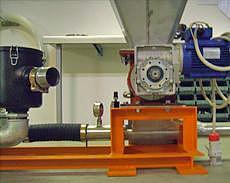
Rosada ILS has designed a dilute phase pneumatic conveying of the type with rotary valve dimensioned to ensure adequate fluidization of the powder, so as to avoid both the load lines on the loading port and on the other the jamming in the recesses in the rotor.
The conveying air is sucked by the blower through a heating battery which guarantees a minimum temperature and reduced degree of relative humidity, essentially to ensure as far as possible a fluid dry and cold.
The transition hopper is was made with an inner chamber for venting. All edges, both external and those in the inner chamber, have been The transition hopper is was made with an inner chamber for venting. All edges, both external and those in the inner chamber, have been widely rounded. This solution allows to download the hydrated lime avoiding packing on the way down, at the same time by disposing the flow of air for the flushing of the seals of the rotor and the aeration of the powder without that this hinders the loading of the compartments of the rotor of the valve.
The rotary valve The transition hopper provides to discharge the dosed hydrated lime in an ejector exhaust collector, with an original profile of the passage section from the outlet mouth of the rotary valve junction with the line of pneumatic conveyance for the purpose of facilitating the flow input of the product.
An electro-pneumatic panel allows the j-pack be managed directly by the control room.
The design of the flow processing has also led to the definition of some of the tools necessary for the proper monitoring of the parameters of the injection. A level switch on the hopper transition indicates blockages in the rotary valve. It was chosen as a function of its ability to function even in the event hydrated lime deposits are formed on the body. While a pressure switch ensures to monitor the correct pneumatic conveying pressure.
The choice of plant design that has led to the definition of the j-pack system, for the injection of hydrated lime in a flu duct, was also made on account of suitable pressure of pneumatic conveying.
Often you make the mistake to believe that in a dilute phase pneumatic conveying the choice of pressure is only the end result of a summation of pressure losses that the conveyed fluid suffers along the line. As in the pipe does not travel only the fluid but also the material to be conveyed, in general this calculation is estimated to largely excess, both in terms of flow rate of the fluid and pressure. conveying Among other things, this also implies that the choice of the blower (or compressor) is not carried out properly.
A badly executed sizing can result in excessive costs of installation and operation. It is also likely to affect the proper pneumatic conveying of material along the pipeline.
Thanks to a deep knowledge and expertise acquired over time Rosada ILS was able to ensure the reliability of the solution.
